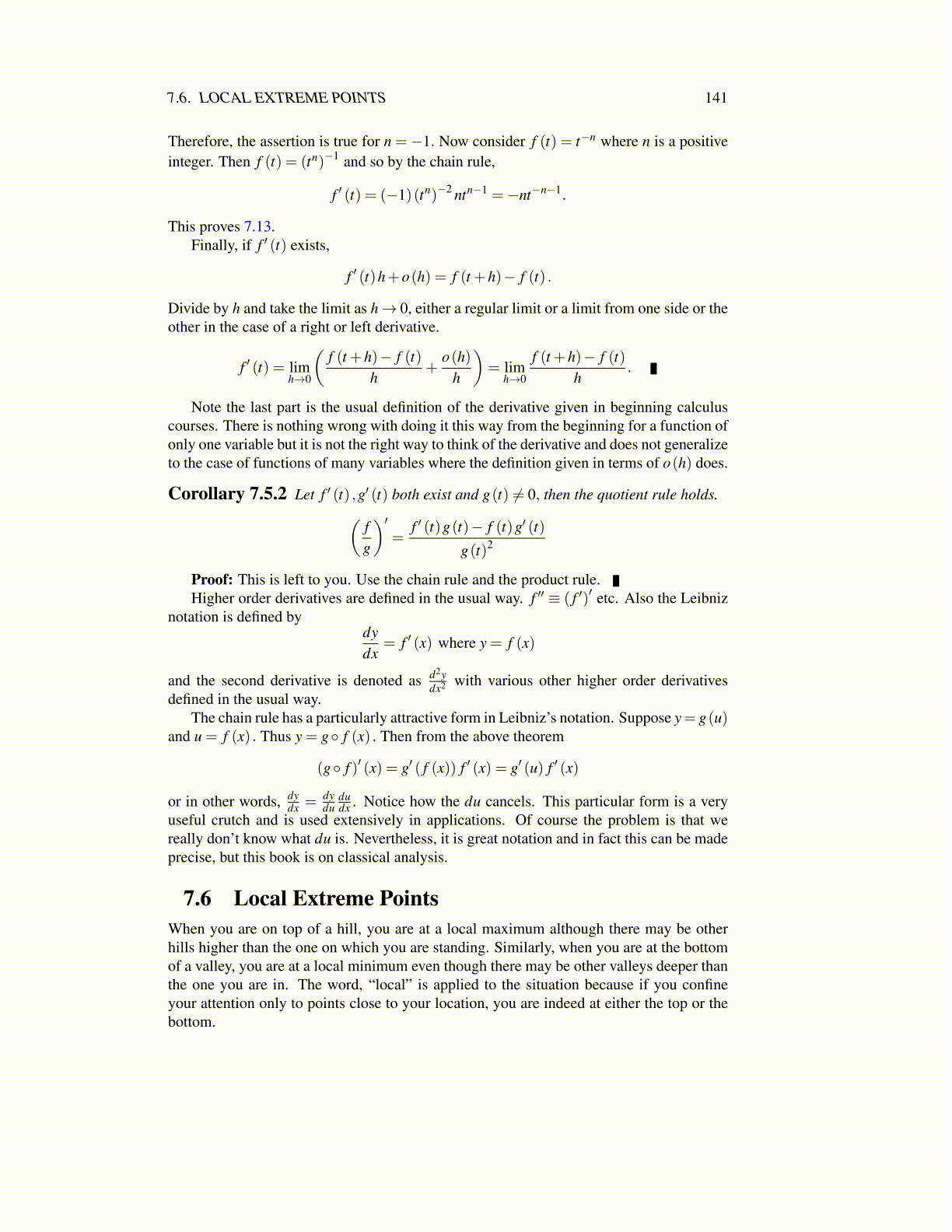
7.7. EXERCISES 141
2. A continuous function f defined on [a,b] is to be maximized. It was shown abovein Theorem 7.6.2 that if the maximum value of f occurs at x ∈ (a,b) , and if f isdifferentiable there, then f ′ (x) = 0. However, this theorem does not say anythingabout the case where the maximum of f occurs at either a or b. Describe how to findthe point of [a,b] where f achieves its maximum. Does f have a maximum? Explain.
3. Show that if the maximum value of a function f differentiable on [a,b] occurs at theright endpoint, then for all h > 0, f ′ (b)h ≥ 0. This is an example of a variationalinequality. Describe what happens if the maximum occurs at the left end point andgive a similar variational inequality. What is the situation for minima?
4. Find the maximum and minimum values and the values of x where these are achievedfor the function f (x) = x+
√25− x2.
5. A piece of wire of length L is to be cut in two pieces. One piece is bent into the shapeof an equilateral triangle and the other piece is bent to form a square. How shouldthe wire be cut to maximize the sum of the areas of the two shapes? How should thewire be bent to minimize the sum of the areas of the two shapes? Hint: Be sure toconsider the case where all the wire is devoted to one of the shapes separately. Thisis a possible solution even though the derivative is not zero there.
6. Lets find the point on the graph of y = x2
4 which is closest to (0,1) . One way to
do it is to observe that a typical point on the graph is of the form(
x, x2
4
)and then
to minimize the function f (x) = x2 +(
x2
4 −1)2
. Taking the derivative of f yields
x+ 14 x3 and setting this equal to 0 leads to the solution, x = 0. Therefore, the point
closest to (0,1) is (0,0) . Now lets do it another way. Lets use y= x2
4 to write x2 = 4y.Now for (x,y) on the graph, it follows it is of the form
(√4y,y
). Therefore, minimize
f (y) = 4y+(y−1)2 . Take the derivative to obtain 2+ 2y which requires y = −1.However, on this graph, y is never negative. What on earth is the problem?
7. Find the dimensions of the largest rectangle that can be inscribed in the ellipse, x2
9 +y2
4 = 1.
8. A function f , is said to be odd if f (−x) =− f (x) and a function is said to be even iff (−x) = f (x) . Show that if f is even, then f ′ is odd and if f is odd, then f ′ is even.Sketch the graph of a typical odd function and a typical even function.
9. Find the point on the curve, y =√
25−2x which is closest to (0,0) .
10. A street is 200 feet long and there are two lights located at the ends of the street.One of the lights is 1
8 times as bright as the other. Assuming the brightness of lightfrom one of these street lights is proportional to the brightness of the light and thereciprocal of the square of the distance from the light, locate the darkest point on thestreet.
11. Find the volume of the smallest right circular cone which can be circumscribed abouta sphere of radius 4 inches.